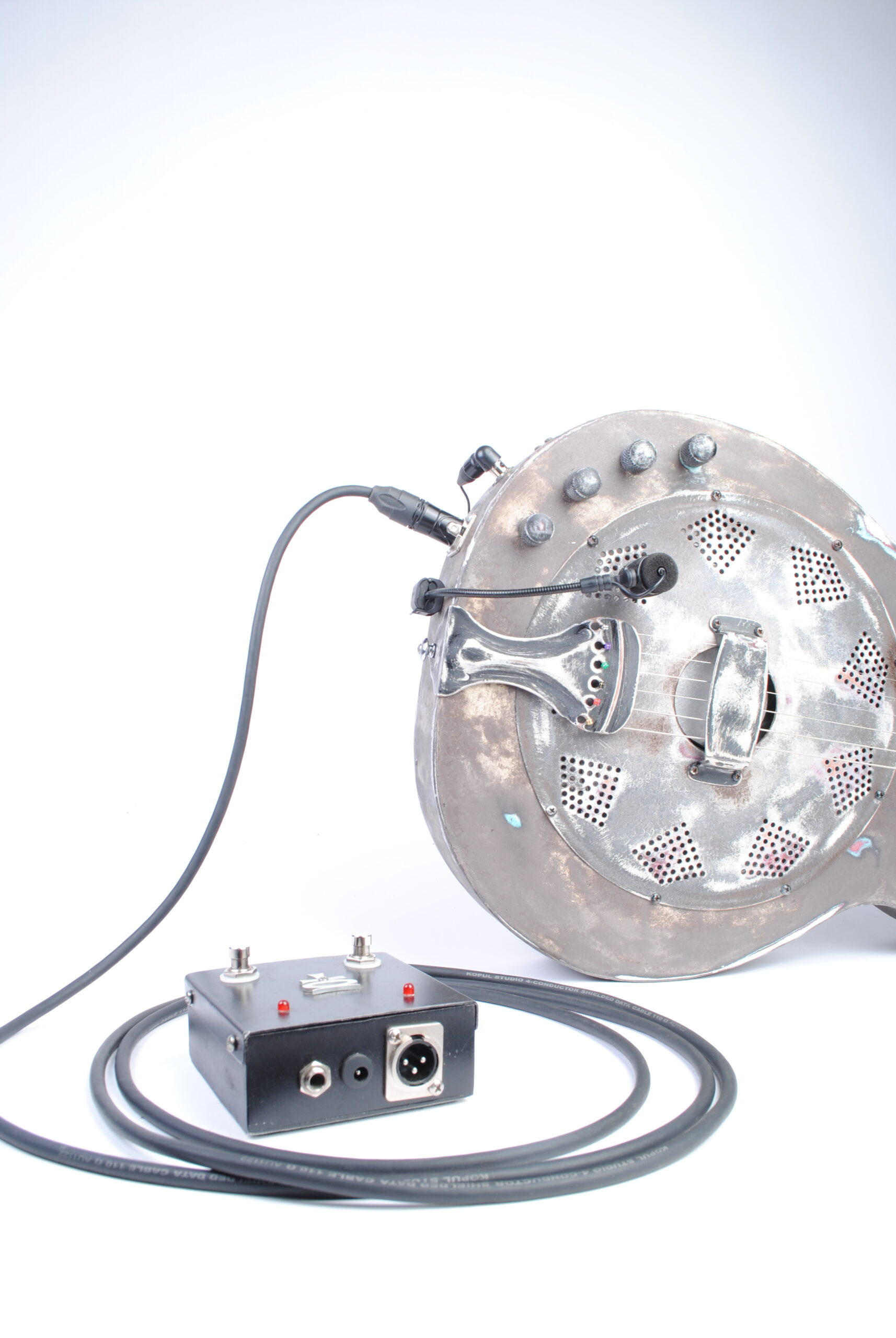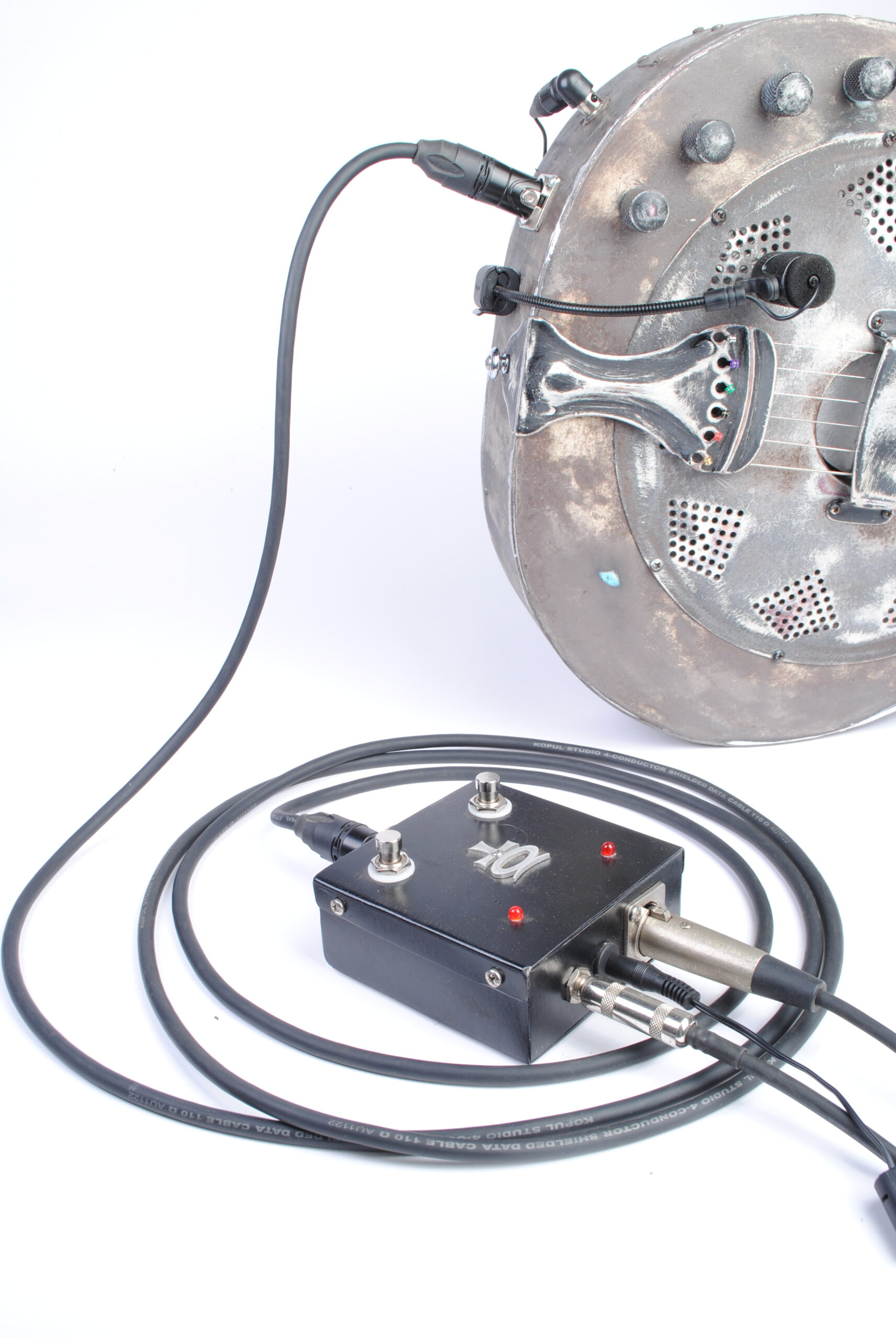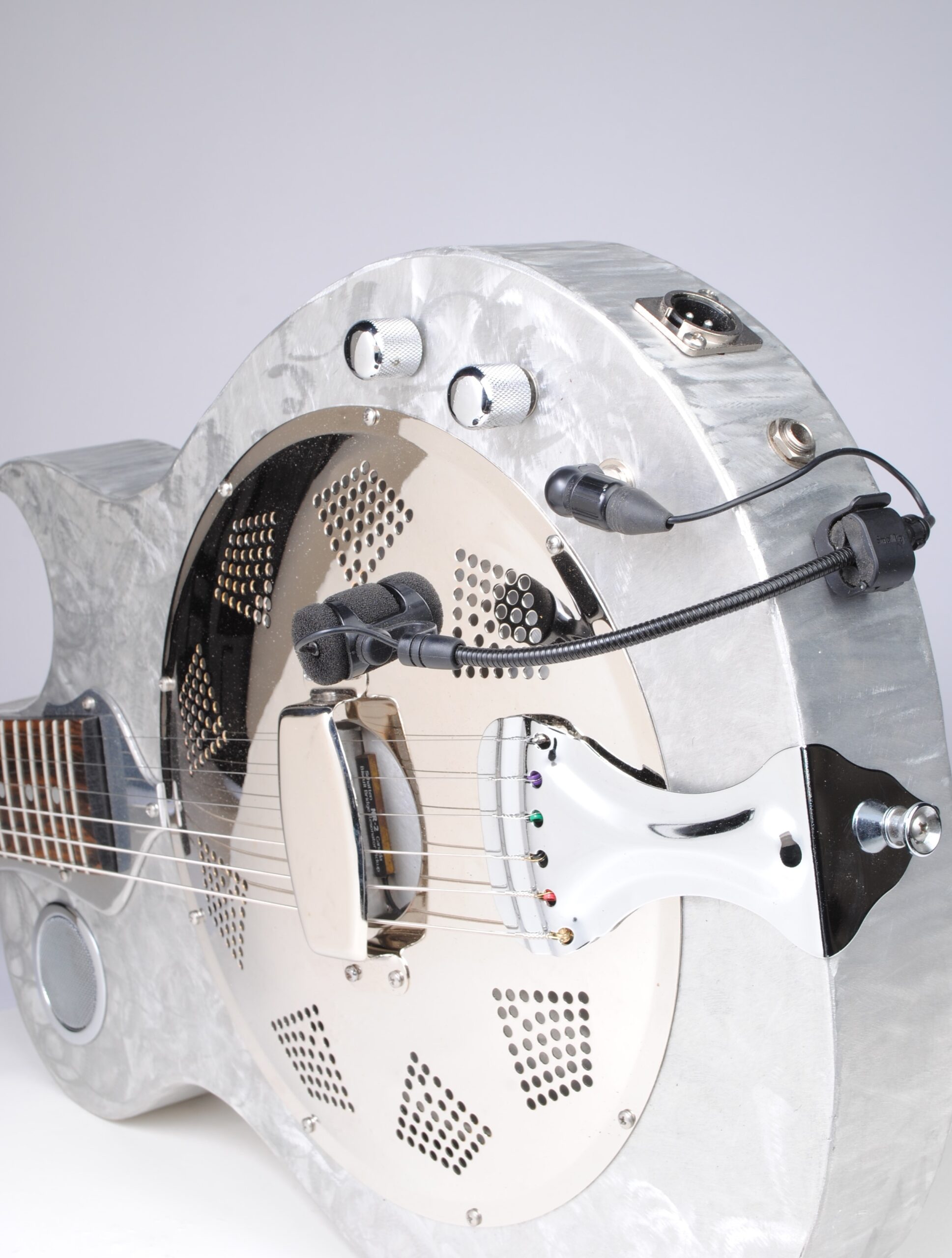
The IMS
Integrated
Microphone/Pickup
System
Versatility and Freedom
The best way to amplify a resonator guitar is with a microphone. Add boost, depth and add effects through a magnetic or piezo pickup to develop your own distinctive sound.
- Removable mini gooseneck condenser mic that mounts to the guitar body
- Phantom Power preamp built into the guitar body or foot switch (mic requires phantom power)
- Magnetic pickup at the neck and/or an active piezo pickup on the bridge
- Or, forgo the pickups
- Internal routing of wires for both channels with one convenient cable for both signals
- Foot switch with on/off for both mic and pickup channels with a 1/4″ out for the pickups and XLR out for the mic
- Run the mic directly to the house PA, or to an amplifier with an additional phantom power DI box
Microphone feeds into the body through a 90 degree mini XLR (Tini-QG), with the signal exiting the guitar, separate but congruent, with the pickup signal, avoiding the awkwardness of multiple external cables and allowing freedom of movement on stage. No need to be trapped behind two separate boom mic stands. This guitar has the IMS+. Gooseneck mic with pickups both at the neck and bridge (honestly, it is a bit overkill).


LED indicators let you know if each channel is on or off. Phantom power preamp is mounted inside of the box to accommodate other instruments. But, it can be mounted inside the guitar.
Warning to those new to live performance and amplified hollow body instruments. Feedback is inevitable if you don’t position yourself properly. You can’t stand directly in front of your amp if you don’t want to scare the crowd with an intense, hi pitched squeal. But, this microphone is pretty good at isolating the instrument from unwanted noise compared to some of the other microphones I have tried.
obviously with this system, you are generating two separate signals. So you will have to consider that if you choose to purchase one of these guitars wired like this. There are numerous two channel acoustic guitar amplifiers that accept XLR. There are also many two channel amplifiers that accept two 1/4″ inputs. That is how my personal rig is set up. Normally, you want to avoid running two separate signals through the same amp. But, in this case, your are amplifying the same source, so you don’t have competing signals that muddy the sound. You can buy an adapter from XLR to 1/4″ but you will need to also purchase a 48v phantom power supply. You can get one online for about $50.
I realize this is a lot of information, so I am more than happy to answer any questions. And, you are quite likely to have a question for which I don’t have the answer. But, I will do everything I can to make sure you are satisfied with my product. To hear how the system sounds recorded, you can go to my music page to listen. https://www.michaeljosephcain.com/
